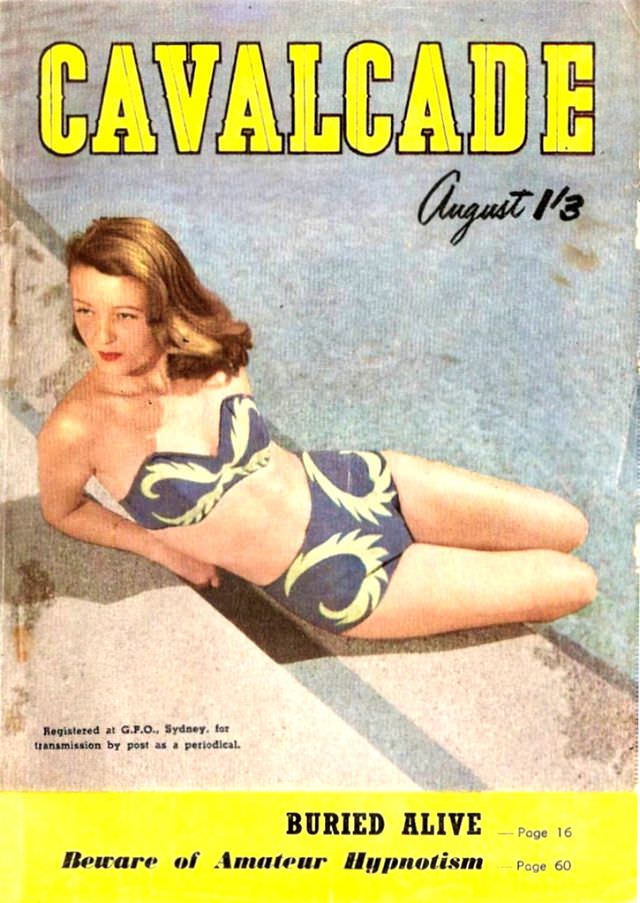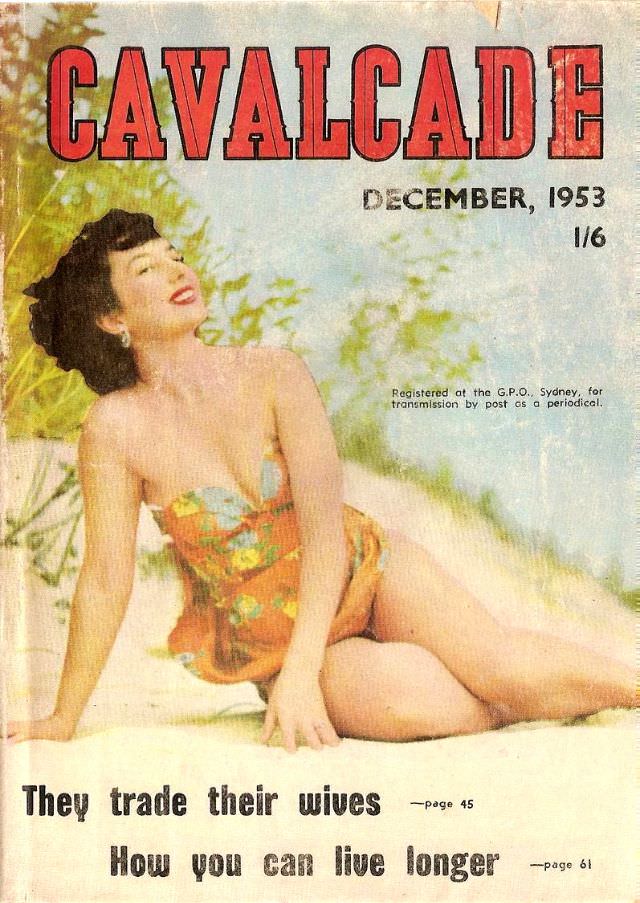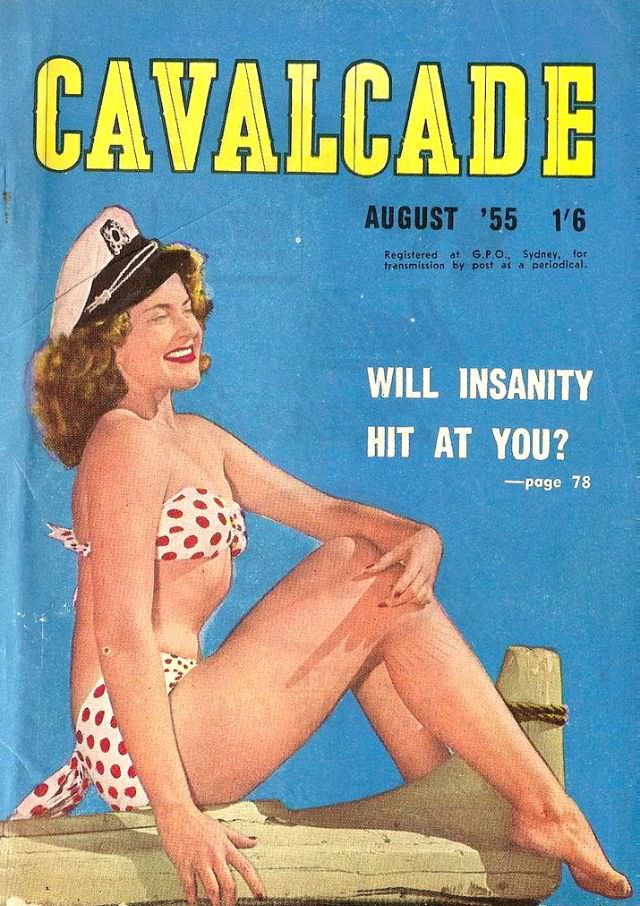Cavalcade, an Australian men’s magazine that began in the early 1940s, underwent significant transformation in its content and style by the 1950s. Originally rooted in the context of World War II, the magazine initially focused on serious subjects predominantly related to the war. This period of the magazine’s history set the stage for its evolution in the subsequent decade.
Early Content and Focus
During its early years, Cavalcade’s content was heavily influenced by the ongoing World War II. The magazine featured articles and features that dealt with aspects of the war, reflecting the global situation at the time. Additionally, the early cartoons and gags presented in Cavalcade were relatively benign, aligning with the more serious tone of the magazine.
Shift to a More Risqué Approach
As the 1950s progressed, Cavalcade began to shift its focus, gradually adopting a more risqué and sensational style. This change was evident in both the textual content and the visual elements of the magazine. The cartoons became bolder, and the text stories often featured lurid and sensational themes, marking a distinct departure from the magazine’s earlier approach.
Inclusion of Comic Stories by Phil Belbin
One of the notable aspects of Cavalcade in this era was the inclusion of well-crafted comic stories with art by Phil Belbin. Belbin’s contributions added a new dimension to the magazine, showcasing artistic talent and enriching the content with engaging visual narratives. These comic stories were a highlight for many readers and contributed to the magazine’s growing popularity.
Evolution Towards a Playboy-like Format
Towards the end of its run, Cavalcade’s format and content increasingly resembled those of Playboy magazine. This shift was indicative of changing societal attitudes and the magazine’s adaptation to contemporary trends. Cavalcade’s later issues were characterized by a greater emphasis on lifestyle and entertainment, appealing to a broader and more modern audience.










































